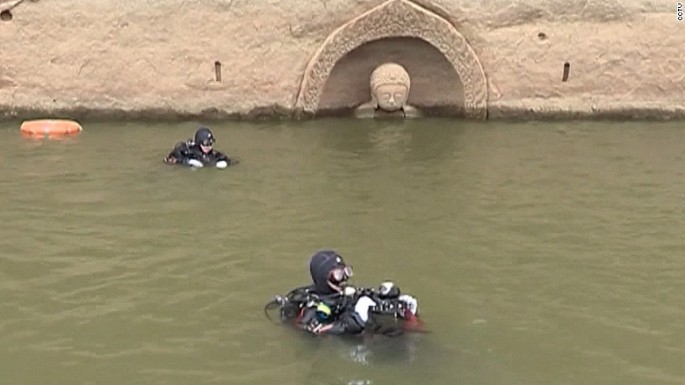During a routine renovation work, a local villager spotted a familiar figure emerging from a reservoir in east China's Jiangxi Province. Over 10 meters of water was all it took to allow the ancient statue to resurface.
Ming Dynasty Artifact
According to archaeologists, the statue dates back to the ancient Ming Dynasty which lasted from 1368 to 1644. The statue is around 12.5 feet (3.8 meters) tall and carved into a cliff.
"A preliminary study of the statue suggests it was probably built during early Ming Dynasty, maybe even earlier as the Yuan Dynasty," said Xu Changqing, director of the Research Institute of Archaeology of Jiangxi Province, in a CNN report.
The discovery is said to be only the tip of the iceberg, as the area is a potential site of numerous archaeological artifacts.
Locals say that the Hongmen reservoir was built on top of the ruins of the ancient Chinese city of Xiaoshi. The statue was covered in water in the 1960S when the reservoir was under construction.
Survivors of the Cultural Revolution
Xi said that the submerged statue greatly benefited from the water, which surprisingly preserved many qualities of the artifact.
"If the statue wasn't covered in water, it could have faced other problems such as weathering, oxidation or others," he said.
Many cultural relics were destroyed during the country's Cultural Revolution in the 1960s when people were told to get rid of everything old, feudalistic and superstitious.
According to local legend, the Buddha Statue was built by ancient people as a spiritual protector against the rapid flowing current from the convergence of two rivers.
When the Hongmen reservoir was built, authorities were not aware of its heritage status.For some local village elders, the resurfaced statue has brought back old memories of the artifact. Some villagers saw the Buddha Statue for the first time in 1952.






















